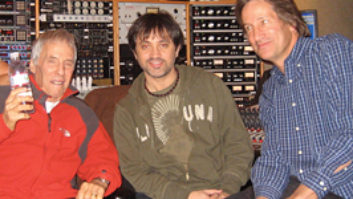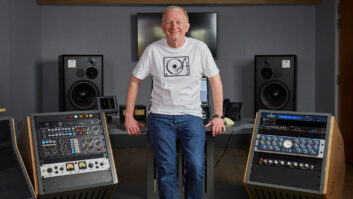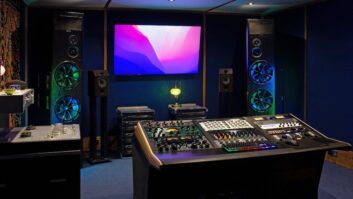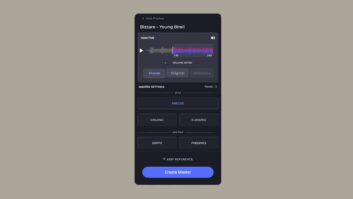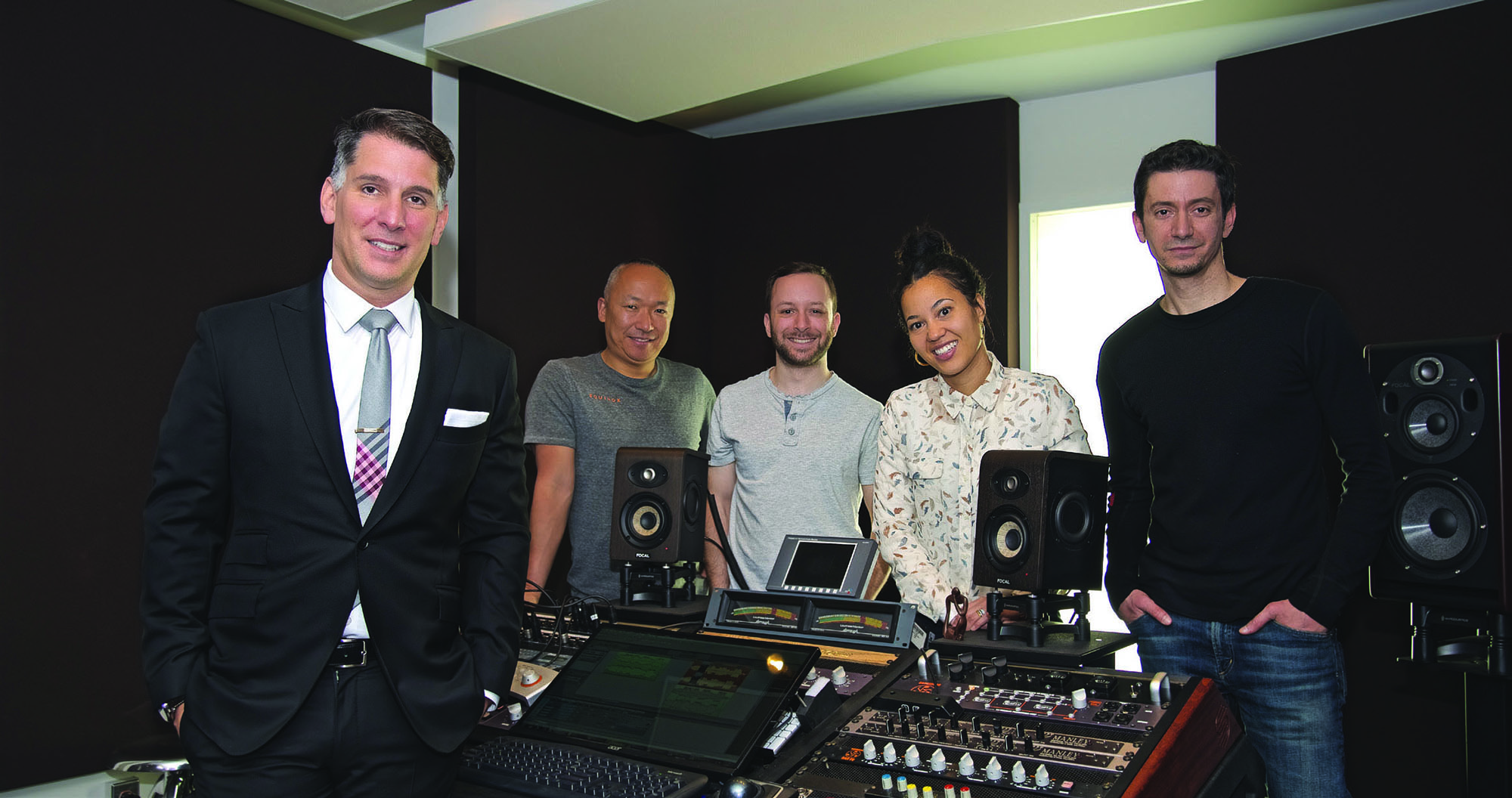
Dave Kutch is a sharp dresser with a unique sense of style. He just knows what looks good, tastes good, smells good. It’s evident in his surroundings as he walks through his two-room facility, The Mastering Palace. And it’s evident in his demeanor as he dives into conversation. He tells a good story, for sure, one-on-one or in a small group. And most importantly, he listens. He asks questions and he engages. He certainly knows what sounds good.
One month ago, Kutch celebrated his ten-year anniversary of working out of the first floor of an old firehouse on West 121st Street in Harlem. To mark the milestone, rather than throw himself a party, he announced that all of his profits for the month will be given to two local charities.
Then just two weeks ago, Kutch flew home to New York with a Latin Grammy in hand, his first, for the smash Latin/hip hop hit “Despacito.” It’s been a busy month. Hard work and a focus on “what’s around the corner” have done him well. Then again, this is a guy who was soldering and terminating his own cables two years before he had found the space to hold The Mastering Palace. He knew where he was headed.
Kutch grew up in a musical family and like lots of others his age, wanted to be a rock star. In 1990, after graduating from high school, he attended the New York Institute of Technology recording program, then quickly moved into an internship at Tiki Recording Studios under the tutelage of Fred Guarino.
Tiki was a great laboratory for a 19-year-old fledgling engineer. Rock bands, voice-overs for corporate productions, and a wide variety of projects worked their way through the studio, and Kutch worked on many of them. He also learned how to maintain the Trident TSM console. “I’d go in on the weekend and help them with the EQ pots, soldering all day. Studio maintenance was a big part of what I learned at Tiki, and Fred Guarino was an incredibly talented tracking engineer.”
After about six months, Guarino needed an assistant for a session he was tracking at Debbie Gibson’s home studio on Long Island, and he tapped Kutch. Phil Ramone would be producing the project, which was Kutch’s first paid gig. He says, “I learned a lot of my earliest recording philosophies from Phil. Trust your ears was something that Phil used to tell me all the time. It’s not about looking at meters or a scope; it’s what you hear. I tell people today that my left hand can be my most valuable tool, because I use that hand to cover my eyes and just listen.
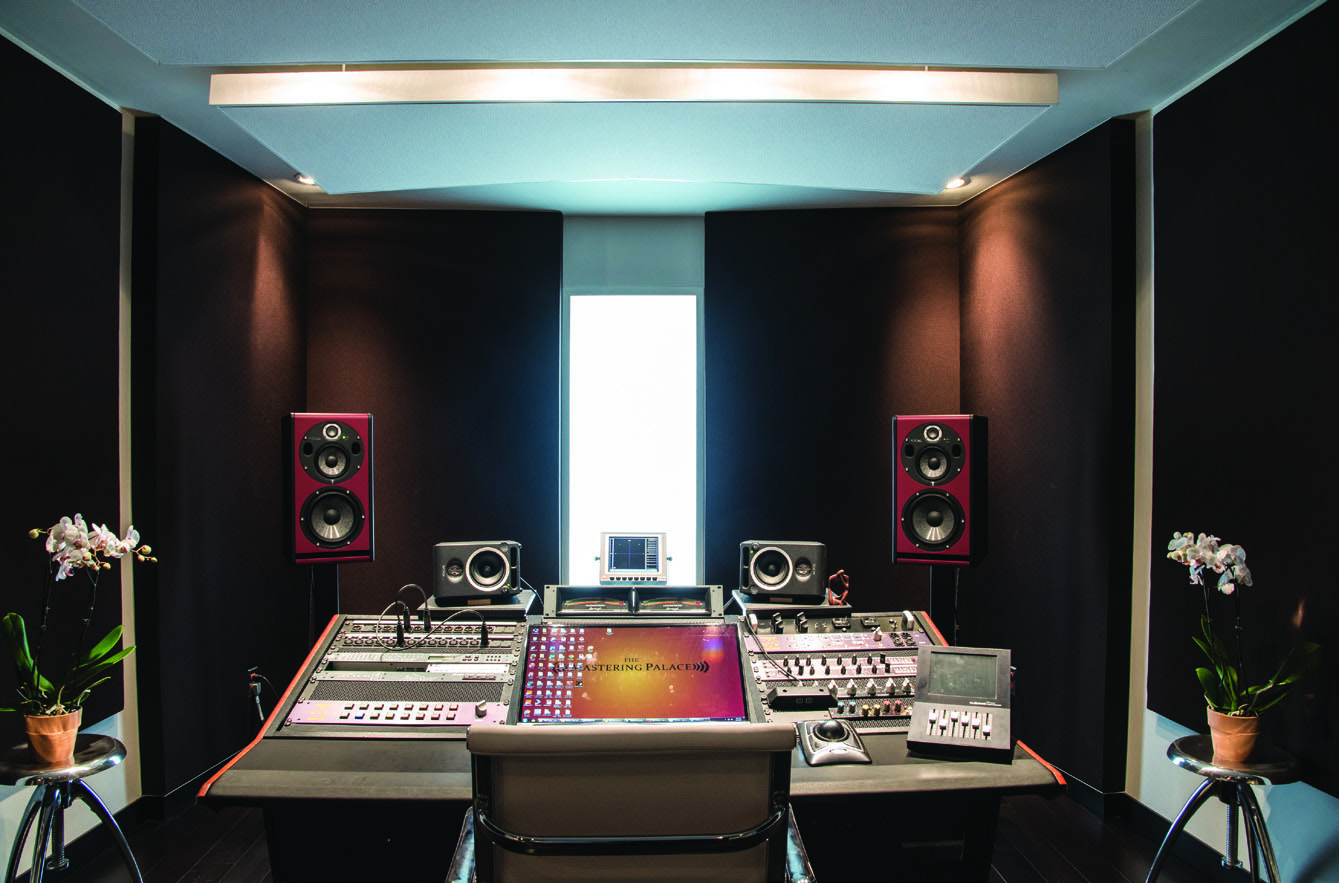
“Phil also taught me that it’s not about recording a guitar or a keyboard,” he continues. “A recording engineer’s primary job is to create an environment in the studio where the artist doesn’t see, feel or become encumbered by the technology that is around them. You have to be one step ahead of the process, making sure that a microphone is always ready to go, for example, so that when the best performance comes you’re ready to capture it. Debbie Gibson was a true studio professional.”
The gig with Debbie Gibson helped Kutch land an assistant engineering position at The Hit Factory in 1994, at the height of the studio’s dominance. Michael Jackson, Neil Sedaka, Biggie, Puffy, Public Enemy and countless others passed through the door. The variety brought in different genres and wide-ranging personalities, and Kutch learned to manage and work with all types. “I also learned from Eddie and Troy Germano how a client should be treated and how you operate a recording studio in New York City,” he says. “It isn’t easy.”
At the time, Hit Factory had nine studios and five mastering rooms at two locations on West 54th Street. Tiring of the hours and unpredictability of being an assistant, after three years he asked the Germanos if he could take over the fifth mastering room and make a switch.
“The fifth room had a Sonic Solutions hard disk recording system, the only one in the entire building,” Kutch says. “This was before Pro Tools became the mainstay, and I wanted to learn hard disk recording. Nobody else wanted that room. So I took it over. Not only did I learn hard disk recording, I learned how to cut vinyl from Herb Powers. Learning the oldest and the newest, the limitations of both mediums, at the same time.”
The association with Powers would continue when the veteran left Hit Factory in 1997 to open Powers House of Sound, with Kutch as the sole assistant. “The first album mastered there was Biggie’s Life After Death and then Puffy’s No Way Out,” Kutch recalls. “I did all the sequencing and editing. In that tenure of three years with Herb, it was all the early Usher albums, the Missy albums, TLC, and on and on. We had an amazing success rate with Number One hits. His room with me in a production suite. Herb is an awesome man. I learned how to treat the client from Herb. Just a good person. I was 25 at that time. I was hungry and I had a lot of hustle.”
When Powers closed shop a few years later, Kutch went to work for Masterdisk, in a surround room that did very little surround work, then later Sony, where he was able to outfit his own room on their dime. When the studios closed nearly three years later, he was able to buy the gear lock, stock and barrel for pennies on the dollar. That gear would soon outfit The Mastering Palace, but not quite yet. First he had to go on location.
“This is where Alicia Keys comes in, and Ann Mincieli,” Kutch explains, “and that’s why I will always love Alicia I will always love Ann. Right when [Sony] was about to shut down, Alicia and Ann booked me to master the As I Am album. I was excited. But Sony was a mess. Alicia and Ann asked if I cold move all my stuff out to The Oven Studios in Long Island and master from their live room.”
In a bizarre twist of fate, Keys’ The Oven Studios was the former Tiki. Kutch had set up a meeting between Keys and Guarino when the latter decided to sell, bringing him a nice check for helping to broker a real estate deal. He had never been paid a dime while at Tiki, but he returned with a hefty check, a budding career and a big album in front of him. He worked from his portable rig in the live room for four months. And just as he was wrapping up, he found the space in Harlem that became The Mastering Palace.
Working remotely during the day and doing construction at night, Kutch slowly brought his business to life. He did all the construction himself, saying, “The first room was literally built by me with a miter saw, a Skil saw, L-brackets, sheet rock screws and a power drill. And a ton of blood, sweat and tears.”
There’s a reason he named his new facility The Mastering Palace and not Dave Kutch Mastering. He knew that with his name on it, it would always be associated with him; he wanted at least two rooms from the beginning, and he wanted to work with other engineers. So about three years in, he brought in noted engineer Tatsuya Sato to work nights and odd hours. Later, with the completion of the second room, he would add mastering engineer Mark Santangelo.
“I’ve been very fortunate, and business was good, so there was no way I was building another room with my bare hands,” Kutch laughs. “Zach Hancock, who runs Downtown Studios, had introduced me to Martin Pilchner about two to three years before I built the room. Drinking and dining with Martin is nothing but fun. The first reason I chose Martin is because I could have a conversation with him. And he listens. The second reason is that he is absolutely a genius, but can educate you in the simplest form. This is the guy I want to build my second room.
“When I was ready I called him, and he came down,” he continues. “Simple measurements, the blueprints. Everything was down to an 1/8-inch. No problems. I got more room than I was even expecting.”
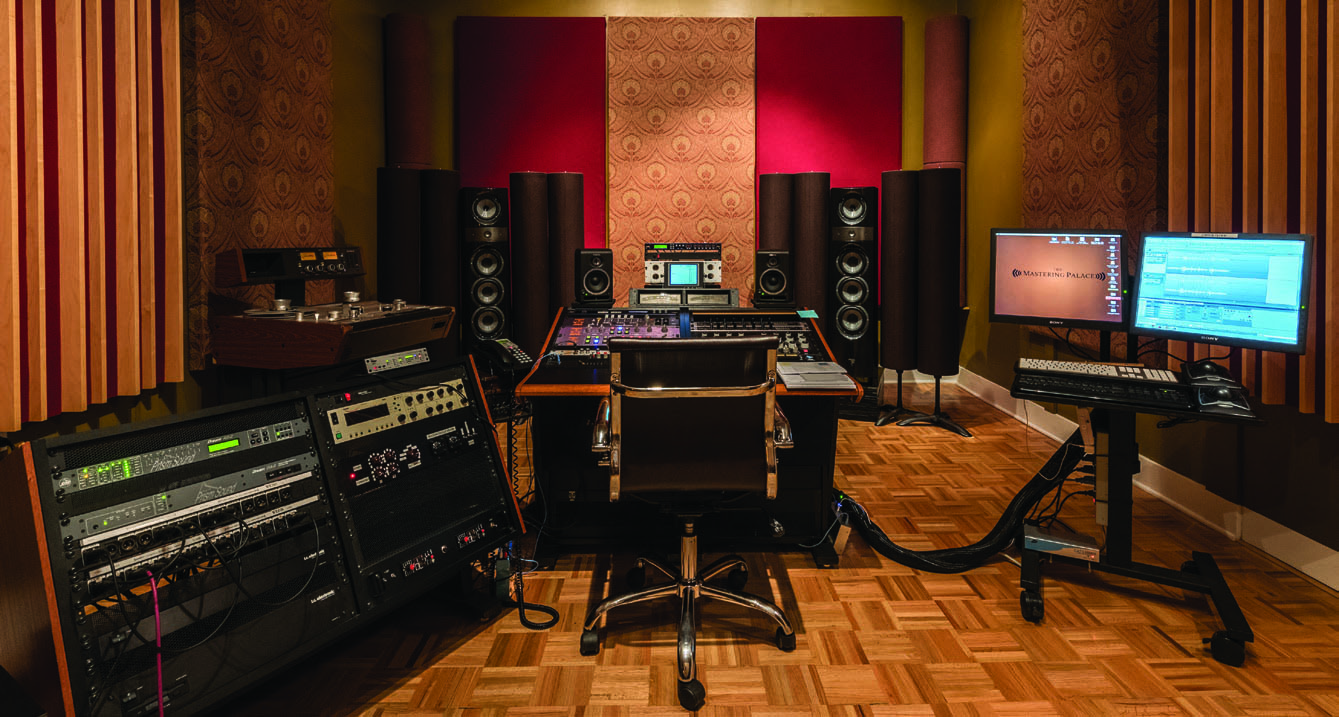
From the time he opened the doors, Kutch had developed a relationship with Focal and their first generation of nearfield monitors. Also with Dangerous Music. “It’s all the same signal path,” he says of his rooms and his chain. “That’s where your signal is going through for monitoring. That’s where your signal is going for processing. Then it’s hitting your speakers. As far as EQs and plug-ins, they all sound so good, it’s almost foolish to pick. I don’t put my name on anything until I know the people. Chris Muth is a genius, and Focal and Dangerous have always been there for me.”
The Mastering Palace is home, but Kutch still takes his skill set on the road, offering his Private Mastering Service to clients who prefer to stay closer to home. “I take either the Focal Trio 6s or SM 9’s with me, depending on the size of the room, plus a pair of Shape 4s,” he says. “When traveling I use the Dangerous Source as my I/O and their two-channel Dangerous Convert. Sequoia is my DAW. It’s stable. They were the first software to emulate Sonic Solutions when Sonic failed.
But the subject quickly changes from gear to people, as Kutch consistently expresses his gratitude for those who have helped him along the way, and his humility for his own good fortune. He realizes that he got a bachelor’s degree from Fred Guarino and Phil Ramone; a master’s degree at The Hit Factory, and a Ph.D. from Herb Powers. That’s why he wants to give back. That’s why he mentions his own mentors and his new team so frequently.
“I’m so glad that New York has Ann and Jungle City and Troy and Germano Studios,” he says. “These are two people who know great studios and know how to service a client. And they’ve always been good to me. Then the core of my team is Kara Coleman, the best studio manager I’ve had in ten years, and my assistant engineer Kevin Peterson, who just had a Number One hit in the UK with Camilla. My goal for the past two to three years has been to take The Mastering Palace and its association with Dave Kutch, and turn it as much as I can on these other talented people who work here.”
It’s been an amazing ten years for Dave Kutch and he realizes both how hard he has worked and how fortunate he has been: A great team, great studio, great artists, Grammy nominations. Ten years ago he was wielding a hammer. Now, he’s done all right, and he’s humbled by it. He wants to give back.
“This neighborhood has been wonderful to me,” he concludes, “and I’ve always been thankful for the instruments that were around me growing up and put in my hands as a kid. I realized that there were a lot of kids around who have no access to instruments, either because they can’t afford them or the schools are cutting back. I asked Kara to look around at local charities, and she found Amp Up. We were able to decide which neighborhood would receive the instruments, and we chose Harlem.
“And finally, my mother died 14 years ago, in November, and so it is bittersweet celebrating. I found this great charity, Look Good, Feel Better, which helps women get a wig or have a makeover while they’re going through chemo and radiation. My parents were fortunate to be able to afford these simple things, and I realized how much of a difference it made for her—the dignity it brought. I decided to celebrate by giving something back.”

